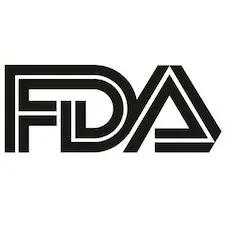Article
Sublingual Apomorphine Dose Needed Independent of Parkinson's Severity
Author(s):
APL-130277 began relieving “off” episodes 5–12 minutes after administration.

Despite optimal therapy with oral levodopa (LD), as many as two-thirds of patients with Parkinson’s disease (PD) have “off” episodes during which the medication’s effects wear off and motor symptoms such as stiffness, slowness, and other mobility problems re-emerge.
These “off” episodes — which typically include morning akinesia, or difficulty moving — have a substantial negative impact on the quality of life of these advanced PD patients.
To provide rapid relief from these “off” episodes, clinicians have developed a number of treatments termed “rescue therapies.” Once such treatment is an investigational sublingual film containing the dopamine agonist apomorphine (APL-130277/Sunovion Pharmaceuticals).
Results of a Phase II, open-label study showed that this film appeared to be effective in treating “off” episodes in patients with PD. These results led investigators to design a Phase III study to determine the dose of APL-130277 needed to convert each PD patient from “off” to fully “on,” when mobility and flexibility are sufficient to engage in daily activities easily.
The investigators also sought to assess the agent’s safety and to determine whether baseline disease severity could be correlated with the effective dose of the agent needed to achieve such a conversion.
Robert Hauser, MD, MBA, (pictured) director of the Parkinson’s and Movement Disorder Center at the University of South Florida, Tampa, Florida, presented the preliminary results of this Phase III study during a poster session at the 21st International Congress of the Parkinson’s Disease and Movement Disorders Society in Vancouver, BC.
The initial, open-label, dose-titration phase (DTP) of the Phase III study focused on determining the appropriate dose of APL-130277 to use for each patient during the 12-week, double-blind, placebo-controlled maintenance treatment phase (MTP) of the study after random assignment of patients to receive active treatment or placebo.
The study enrolled 94 patients; most (62%) were men, and the group’s mean age was 62.5 years. To be included in the study, patients had to have a clinically meaningful response to LD, determined by having patients take their normal LD dose in the morning at the clinic and confirming that they had an “on” response.
They also had to have well-defined early morning “off” episodes determined by the investigator and total daily “off” time of more than 2 hours. At baseline, patients had a mean of 3.8 daily “off” episodes (± 1.3).
Before taking the study drug, all patients were pre-treated for 3 days with 1 of 2 antiemetics: trimethobenzamide (Tebamide/GlaxoSmithKline, Tigan/Pfizer) or domperidone (Motilium/Janssen) to counteract the emetic effect of apomorphine.
During the DTP, to determine each patient’s individual response to a single dose of APL-130277, the investigators evaluated them during a morning “off” episode after their last LD dose was taken no later than midnight of the previous day. After the patient took a test dose, the investigators obtained their MDS-UPDRS Part III score every 15 minutes for 1 hour, and again at 90 minutes after dosing.
Patients who converted to a full “on” within 45 minutes could then enter the MTP of the study. Those who did not convert to a full “on” returned to the clinic in 1—5 days for the next titration dose, and the process was repeated until patients converted to a full “on” within 45 minutes or they reached the maximum dose of 35 mg. In addition to the maximum dose, APL-130277 comes in doses of 10 mg, 15 mg, 20 mg, 25 mg, and 30 mg.
In the 76 patients who completed the DTP and responded to treatment, APL-130277 began providing relief from “off” episodes within 5—12 minutes of administration, and its beneficial effects were sustained for 90 minutes.
In addition, 81% of patients in the DTP turned fully “on” after taking the drug. By 15 minutes after taking the drug, 22% of patients turned fully “on,” and by 30 minutes after taking it, 59% of them did. Moreover, by 30 minutes after taking the drug, MDS-UPDRS Pt. III score improved by 22 points, and by 90 minutes after taking it, that score improved by 16 points.
The median dose of the drug needed to turn patients fully “on” was 20 mg, and nearly half the patients (37/76, or 49%) turned fully “on” at the 10-mg dose.
“Patients did turn on at all dosage levels regardless of inclusion criteria,” David Knocke, RPh, MS, senior director of medical affairs at Sunovion Pharmaceuticals, said.
However, no statistically significant correlation was found between the dose that turned patients fully “on” and disease severity indicated by baseline LD dose, mean number of “off” episodes daily, Hoehn and Yahr stage in the “on” state, or MDS-UPDRS Pt. III score.
“There was an association, but it wasn’t significant,” Knocke said.
Before dosing and approximately 60 minutes after dosing, the investigators did safety assessments to search for signs and symptoms of adverse events and measured subjects’ vital signs. Five subjects discontinued the study, 2 because of nausea and 1 each because of somnolence, headache, or symptoms indicating that a fainting spell was imminent.
Nausea occurred in 16% of subjects, and vomiting in 8%, but both side effects were generally mild or moderate. Moreover, the investigators found no evidence of local oral mucosal irritation in patients taking any dose of APL-130277.
As a result, the investigators concluded that APL-130277 was well tolerated and rapidly improved PD symptoms in patients experiencing “off” episodes.
Two key advantages of APL-130277 are having 6 doses available and not requiring concomitant treatment with carbidopa. However, questions remain about the agent’s onset of action compared with that of subcutaneous apomorphine.
Moreover, the sublingual agent’s effects on oral mucosa in large numbers of patients are still unclear, and having mouth cankers or sores are both exclusion criteria in the ongoing Phase III trial.
Nevertheless, recent developments in rescue therapies for advanced PD like APL-130277 may eventually enable more patients to engage in social activities like going out to a restaurant thanks to the availability of more reliable “off” treatments.
Related Coverage
Lipoic Acid May Limit Brain Atrophy in SPMS Patients
Study: Deutetrabenazine Fixed Doses Reduced Tardive Dyskinesia
No Sign of New Movement Disorders from Long-term Valbenazine for TD





